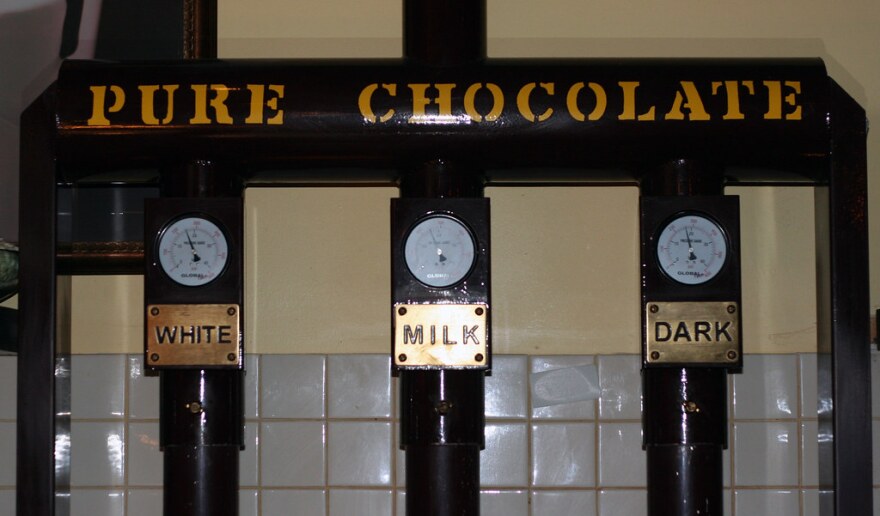We think of chocolate as an unalloyed good. People rhapsodize over it. They say they would sooner go without, well, many things, than chocolate. Some even call it a religious experience.
Rabbi Deborah Prinz said that might not be too far from the truth. She's the author of the book "On The Chocolate Trail," which chronicles the complex story of chocolate and the religious underpinnings to the early chocolate trade. Prinz will speak to several Bloomington-Normal audiences Sunday and Monday.
Even before the Mayan and Aztec Empires in Mesoamerica there is evidence of the use of chocolate in life cycle events and celebrations of the harvest, said Prinz. People who practiced more contemporary religions felt more ambivalent about the substance generated from cacao beans because of what they viewed as its pagan origins.
"Initially the indigenous peoples mysteriously figured out you can take the seeds from the white pulp inside a cacao pod, ferment the seeds and then roast them and grind them, you can have a substance that begins to look a little bit like blood as some ancients believed. Therefore it was powerful and essential to human nature," said Prinz.
For others, she said, it was perhaps simply the opportunity to taste something that was not contaminated water.
It was the first stimulant to arrive in Europe before coffee and tea. Columbus on his fourth voyage saw cacao beans in the bottom of a boat and initially thought they were almonds. Gradually, some Catholic clerics came to enjoy it, though there were holdouts.

"There are stories that a particular bishop prohibited the local women from drinking chocolate during mass. Mass was very long. We can infer from that that it was customary for people to bring their chocolate-making equipment into the cathedral and use it while mass was happening. And then, according to the story reported by Thomas Gage, the women of Chiapas continued to drink their chocolate and the bishop mysteriously died of poisoning," said Prinz.
Jews, on the other hand were using chocolate more adeptly and enthusiastically in their rituals, she said.
They were drinking chocolate for the celebration of the beginning of the Sabbath on Friday night as part of a blessing known as the Kiddush. They were sharing chocolate prepared, ground, and preserved in ball shape until ready for a beverage. They were using those balls or pellets for people who were in mourning. The custom was to give people circular foods for the meal of consolation," said Prinz.
She said they also drank chocolate to prepare themselves for the fast of Yom Kippur, the day of atonement.
She said some of those involved in trade both north and south as they dispersed under pressure from the Inquisition and took chocolate with them. Chocolate also featured prominently in the colonial era in north America, said Prinz.
"The early chocolate trade in Europe was expensive because it was controlled by monopolies gifted or bestowed by the monarchy. There were high taxes plus there was the shipping cost and the distance. In colonial north America chocolate tended to be less expensive, partly because of proximity to sources and partly because there was no monopolies and lower taxes," said Prinz. "It was given out as rations to soldiers. It was distributed to prisoners and often given to poor people."
Prinz said the popularity of the drink rose as well, following the Boston Tea Party, when drinking tea became less attractive.
Prinz said it was not a luxury product back then as it is today. She said it should be more expensive today than it is, because a lot of chocolate production comes from child or slave labor in west Africa.
Rabbi Prinz will speak:
- 10 a.m. Sunday at Moses Montefiore Temple in Bloomington
- 2 p.m. Sunday at Green Top Grocery in Bloomington
- 6 p.m. Sunday at Illinois Wesleyan University - Turfler Room
- 4:30 p.m. Monday in Illinois State University's Center For Visual Arts Rm 147
People like you value experienced, knowledgeable and award-winning journalism that covers meaningful stories in Bloomington-Normal. To support more stories and interviews like this one, please consider making a contribution.



